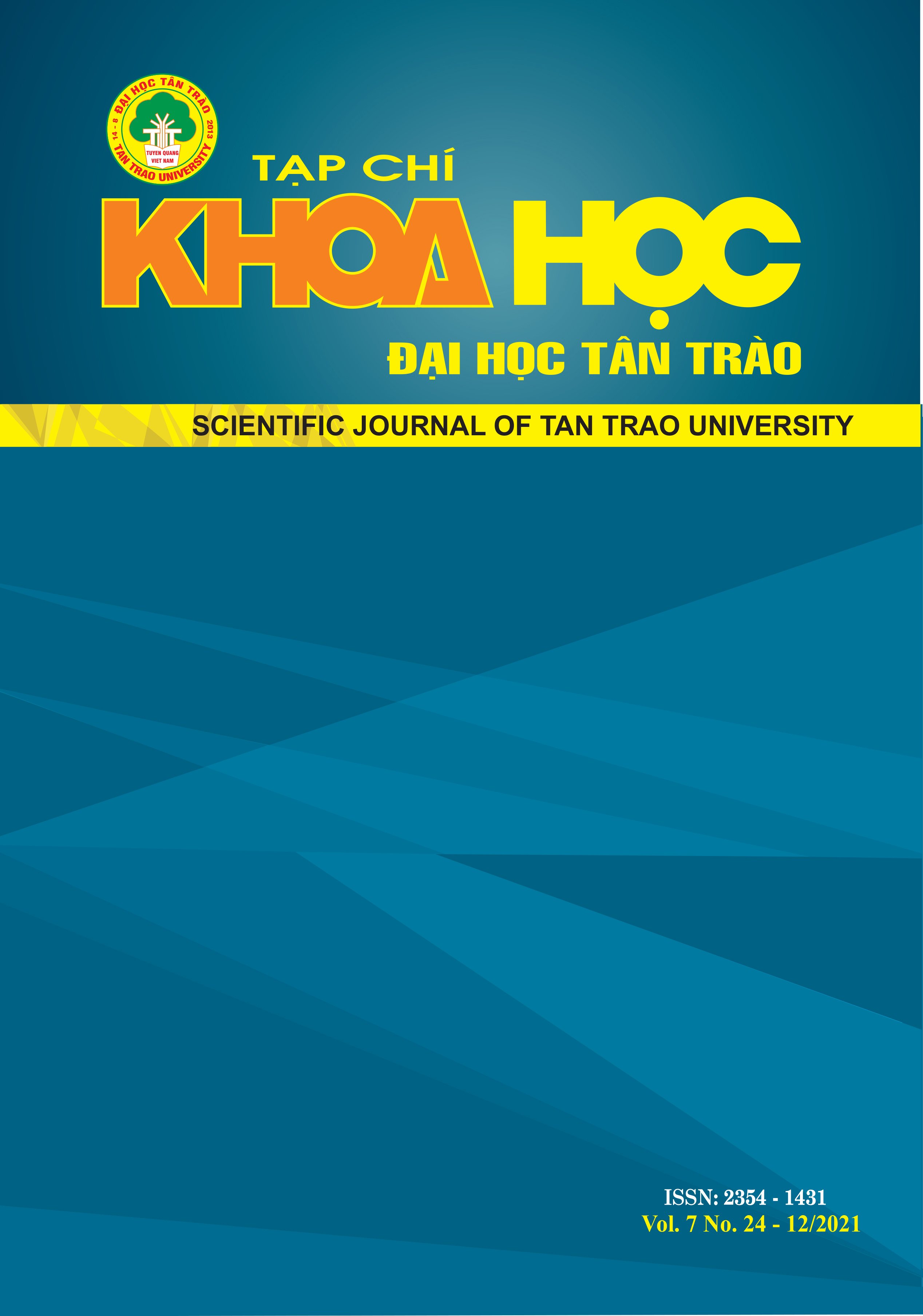ỨNG DỤNG GIS TRONG ĐÁNH GIÁ THÍCH NGHI ĐẤT TRỒNG LÚA TẠI VÕ NHAI, THÁI NGUYÊN, VIỆT NAM
DOI:
https://doi.org/10.51453/2354-1431/2021/686Tóm tắt
Võ Nhai là một huyện miền núi của tỉnh Thái Nguyên với địa hình phức tạp và đa số người dân là dân tộc thiểu số. Người nông dân ở đây canh tác lúa trên những thửa ruộng nhỏ với kỹ thuật canh tác truyền thống mà không có sự nghiên cứu về các nhân tố ảnh hưởng đến sinh trưởng cây lúa cho nên năng suất lúa ở đây thấp và chất lượng gạo chưa cao. Vấn đề đặt ra là cần lựa chọn các vùng đất thích hợp với canh tác lúa để cải thiện năng suất, chất lượng. Trong nghiên cứu này, chúng tôi sử dụng GIS kết hợp với đánh giá đa tiêu chí để xây dựng bản đồ thích hợp trồng lúa tại Huyện Võ Nhai, Thái Nguyên dựa trên 4 tiêu chí đánh giá nhiệt độ, lượng mưa, độ dốc và loại đất. Kết quả cho thấy có 4215 ha thích nghi cao (S1), 43777 ha thích nghi khá (S2), 36068 (ha) thích nghi trung bình, không có diện tích đất không thích nghi (N).
Tải xuống
Tài liệu tham khảo
[1] Ahamed T.R., Gopal Rao K., Murthy J.S.R. (2000) GIS-based fuzzy membership model for crop-land suitability analysis. Agr Syst 63(2):75–95.
[2] Eckert J, Shetty S (2011) Food systems, planning and quantifying access: using GIS to plan for food retail. Appl Geogr 31(4):12161223.https://doi. org/10.1016/j.apgeog.2011.01.011
[3] FAO (1976), A Framework for Land Evaluation, Soil bulletin 32, ed, FAO, Rome.
[4] FAO (2016) Available online: http://www.fao.org/ home/en (accessed on 15 September 2016).
[5] Gatrell J.D., Reid N., Ross P. (2011) Local food systems, deserts, and maps: the spatial dynamics and policy implications of food geography. Appl Geogr 31(4):1195–1196. https://doi.org/10.1016/j.apgeog. 2011.01.013
[6] Geohive, (2014)—Historic, Current And Future |85 No.24_December 2021 |p.6-13 Population: Asia. Available online: http://www. geohive.com/earth/his_proj_asia.aspx. (Accessed on 2 November 2014).
[7] Moore, Jeffrey H. Weatherford, Larry R., (2001), Decision Modeling with Microsoft Excel, 6th edition. Prentice-Hall, Inc.: Upper Saddle River, p. 12-26
[8] Krishnan P, Ramakrishnan B, Reddy Kr, Reddy V. (2011). High temperature effects on rice growth, yield, and grain quality. Adv Agron. 111:87-205.
[9] Mustafa A.A., Man S., Sahoo R.N, Nayan A, Manoj K., Sarangi A., Mishra AK (2011) Land suitability analysis for different crops. A multi criteria decision making approach using remote sensing and GIS. Indian Agricultural Research Institute, New Delhi-110 012.
[10] Purevdorj M; Kubo M., (2005).The future of rice production, consumption and seaborne trade: Synthetic prediction method. Journal of Food Distribution Research, 36 (1): 250- 259.
[11] Prakash T.N. (2003). Land Suitability Analysis for Agricultural Crops A Fuzzy Multicriteria Decision Making Approach. The Netherlands: International Institute for Geo-information Science and Earth observation Enschede; pp. 6–13. (2).
[12] Render, Barry. Stair Jr, Ralph M. (2000) Quantitative Analysis for Management, 7th edition. Prentice-Hall, Inc: Upper Saddle River, p 522-529.
[13] Saaty (1989) Group decision making and the AHP. In: Golden BL, Wasil EA, Harker PT (eds) The analytic hierarchy process. Springer, Berlin, Heidelberg.
Tải xuống
Đã Xuất bản
Cách trích dẫn
Số
Chuyên mục
Giấy phép

Tác phẩm này được cấp phép theo Giấy phép Quốc tế Creative Commons Attribution-ShareAlike 4.0 .
Bài báo được xuất bản ở Tạp chí Khoa học Đại học Tân Trào được cấp phép theo giấy phép Ghi công - Chia sẻ tương tự 4.0 Quốc tế (CC BY-SA). Theo đó, các tác giả khác có thể sao chép, chuyển đổi hay phân phối lại các bài báo này với mục đích hợp pháp trên mọi phương tiện, với điều kiện họ trích dẫn tác giả, Tạp chí Khoa học Đại học Tân Trào và đường link đến bản quyền; nêu rõ các thay đổi đã thực hiện và các nghiên cứu đăng lại được tiến hành theo cùng một bản quyền.
Bản quyền bài báo thuộc về các tác giả, không hạn chế số lượng. Tạp chí Khoa học Tân Trào được cấp giấy phép không độc quyền để xuất bản bài báo với tư cách nhà xuất bản nguồn, kèm theo quyền thương mại để in các bài báo cung cấp cho các thư viện và cá nhân.
Mặc dù các điều khoản của giấy phép CC BY-SA không dành cho các tác giả (với tư cách là người giữ bản quyền của bài báo, họ không bị hạn chế về quyền hạn), khi gửi bài tới Tạp chí Khoa học Đại học Tân Trào, tác giả cần đáp ứng quyền của độc giả, và cần cấp quyền cho bên thứ 3 sử dụng bài báo của họ trong phạm vi của giấy phép.


